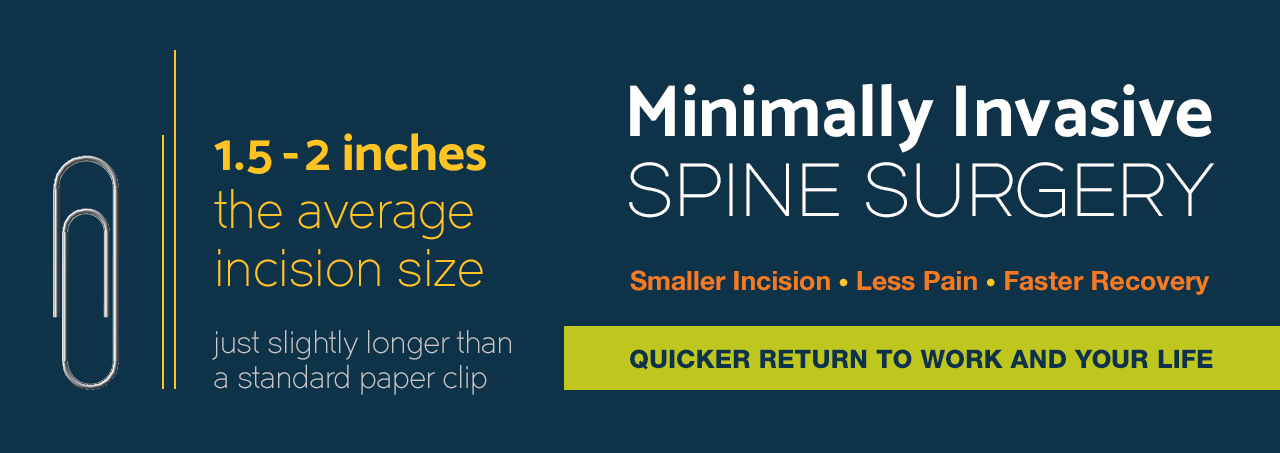
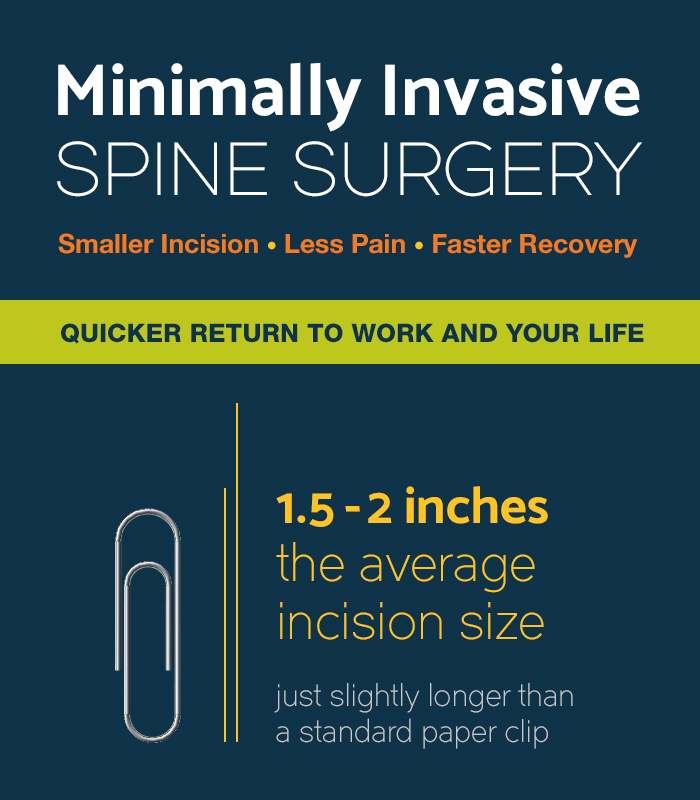
Minimally Invasive Spine Surgery in Northeast Wisconsin
As technology develops, so does our ability to provide patients with more options for innovative surgical procedures. Minimally invasive surgery (MISS) is an emerging, advanced medical procedure.
Minimally invasive spine surgery is a type of surgical technique that is used to treat spinal column conditions such as arthritis in the back, disc herniation and lumbar stenosis. This type of surgery uses microscopes and magnified glasses called loupes and long tubes that are passed through tiny incisions to access the spine. It allows the surgeon to remove broken or displaced discs and create more space for crowded nerves, all without having to cut through muscles and bones with other surgical instruments. MISS also enables doctors to do spinal fusions and disc replacements.
Many patients are surprised that they’re up walking the day of surgery and that they can go home within 23 hours. Minimally invasive surgery allows the surgeon to do everything that would be included in a traditional open surgery, but in a much less invasive manner. This procedure can be performed at all 10 of our locations through out Northeast Wisconsin for your convenience.
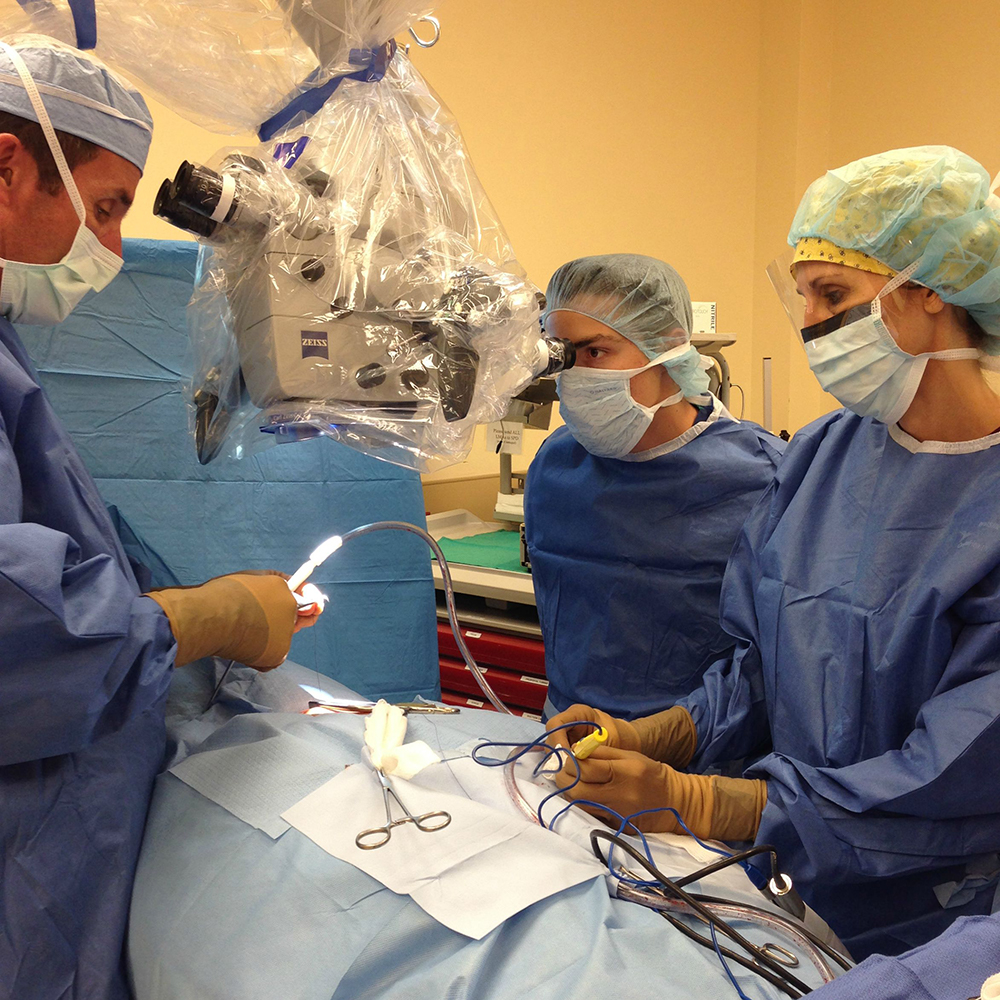

Smaller Scars
Minimally invasive procedures only require incisions around 2 inches in size. Smaller incisions mean less trauma for your body and smaller scars post surgery.

Less Pain
Because minimally invasive spine surgery uses a small incisions, it avoids significant damage to the muscle surrounding the spine. This means less pain following the procedure.

Faster Recovery
You can be up and walking the same day as surgery, and go home within 23 hours. Life is too short for long recoveries!

Quicker Return To Work & Activities
With a shorter recovery time, you can feel great returning home, going back to work, and doing the things you love.
Stories From Our Past Patients
View more videos on our Youtube Channel
Justin Konitzer
Minimally Invasive Patient
Justin talks about his neck issues that resulted from lifting weights and the surgery that stopped his life from being on hold and gave him back full rotation of his neck again.
Ellen Lyman
Minimally Invasive Patient
Ellen talks about how eight years of pain and two back surgeries left her bent at a 45-degree angle and suffering with every step she took. After two six-hour surgeries with Dr. Sumon Bhattacharjee she had two rods put in and can walk again.
Our procedures include:
Anterior Lumbar Interbody Fusion
ALIF is generally used to treat back or leg pain caused by degenerative disc disease. In this procedure, the damaged disc is partially removed while some of the disc wall is left behind to help contain the bone graft material. A metal cage implant filled with bone graft is placed in the empty disc space. This realigns to vertebral bones, lifting pressure from pinched nerve roots. Over time, the bone graft will grow through and around the implants, forming a bone bridge that connects the vertebrae.
Anterior Cervical Corpectomy
This surgery relieves pressure on the spinal cord and the spinal nerves. It involves the removal of bone and discs from your cervical spine, followed by a fusion. After the pressure on your nerves has been relieved, the surgeon stabilizes your spine. Often, this is done with a bone graft. The surgeon places the graft into the open space in your spine, and might chose to secure it with a metal plate and screws. Instead of a graft, your surgeon could choose to use a device such as a cage. You may benefit from physical therapy as you heal.
Anterior Cervical Discectomy
An Anterior Cervical Discectomy removes a herniated or degenerative vertebral disc in your neck and replaces it with a bone graft. This can relieve painful pressure on spinal nerves. The surgeon carefully removes the damaged disc, which leaves a space between the vertebrae. The surgeon then inserts a bone graft into this space. The graft fills the open space and holds the vertebrae in the proper position. The surgeon may secure the graft with a metal plate and screws. As you spine heals, more bone will grow and create a fusion.
Lumbar Disc Microsurgery
This minimally invasive procedure relieves pressure on nerve roots caused by a herniated disc, and can eliminate the pain of sciatica. The surgeon creates a small window in the lamina (a portion of the vertebral bone that covers your spinal canal). The surgeon then places instruments through this window. The spinal nerves are gently moved aside, and the surgeon clears away the herniated portion of the vertebral disc. This relieves painful pressure on the nerves. The rest of the disc is left in place, where it will continue to cushion the vertebrae.

Andrew R. Greene, DO
Minimally Invasive Surgeon
Dr. Greene is an orthopedic spine surgeon who focuses on the surgical treatment of the cervical, thoracic and lumbar spine. He has extensive surgical and nonsurgical training and experience treating degenerative spinal conditions, neck and back pain, disc herniation, scoliosis, and spinal stenosis. He has a special interest in minimally invasive spine surgery, cervical and lumbar artificial disc replacement, microdiscectomy and spinal fusions.

Randall R. Johnson, MD, PhD, FACS

Dr. Johnson is a neurosurgeon who focuses on the treatment of illnesses involving the brain, spine and peripheral nerves. He has extensive surgical and nonsurgical training and experience involving a wide range of neurosurgical problems such as brain and spinal cord tumors, brain aneurysms and vascular malformations, brain and spinal trauma, surgical prevention and treatment of stroke and degenerative spine conditions. Dr. Johnson has a special interest in developing neurosurgical services which can be performed less invasively, minimizing pain and maximizing recovery.


Philip A. Yazbak, MD, FAANS, FACS
Minimally Invasive Neurosurgeon
Dr. Yazbak is a neurosurgeon who focuses on the treatment of illnesses involving the brain, spine and peripheral nerves. He has extensive surgical and nonsurgical training and experience treating brain and spinal cord tumors, brain aneurysms and vascular malformations, brain and spinal trauma, stroke and degenerative problems of the spine. Dr. Yazbak has a special interest in brain tumors and aneurysms as well as minimally invasive spine surgery and disc replacement.
Robert M. Koffie, MD, PhD, MBA
Minimally Invasive Neurosurgeon
Dr. Koffie is a specially trained neurosurgeon with a passion for minimally invasive and complex spinal surgery. When meeting with patients, he works to use the least invasive surgical approaches and world-class technologies that drive excellent clinical outcomes. He is driven to make a direct difference in the lives of his patients so they can return to their everyday activities. He has a special interest in treating patients with scoliosis, spinal stenosis, spinal tumors, degenerative spinal conditions, disc herniations, and other conditions causing neck and back pain.

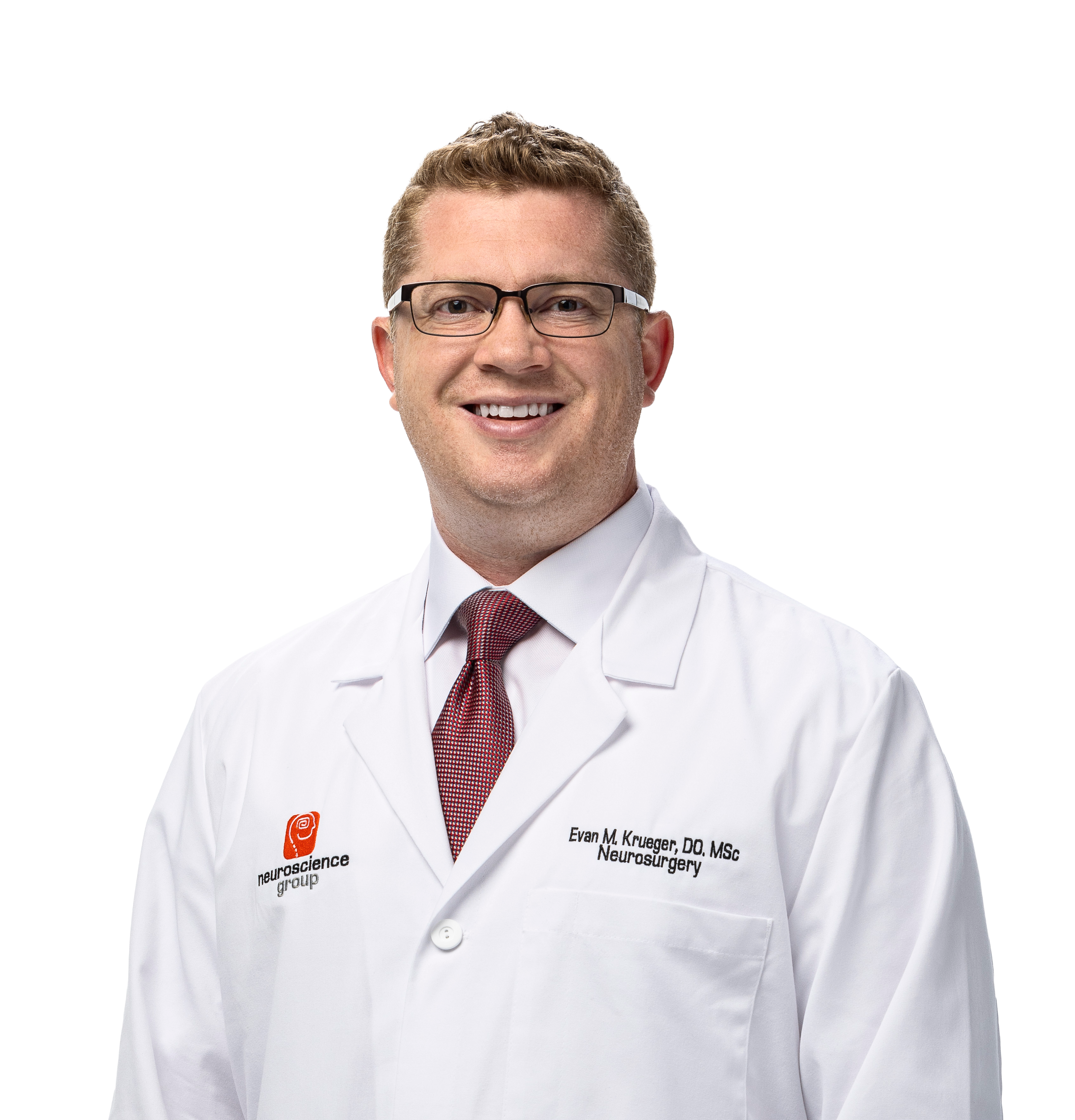
Evan M. Krueger, DO, MSc
Neurosurgeon
Dr. Evan Krueger is a neurosurgeon who specializes in the diagnosis and surgical treatment of disorders of the central and peripheral nervous system including tumors, traumatic brain and spinal cord injuries, and degenerative spine disease. He completed a fellowship in neurotrauma and neurocritical care. His approach to care is to treat his patients with compassion and dignity. He is practical, direct and comforting. and patients can trust that he will be their advocate.
In Our Patients Words
How Do You Know You’re Getting the Very Best Spine Care in the Area?
Neuroscience Group surgeons participate in the Quality Outcomes Database. What does this mean for you?
- Your doctor uses actionable data to guide your spine care management.
- You will receive the most valid and evidence-based care available.
- You have chosen a provider that demonstrates a passion for optimizing your outcome.
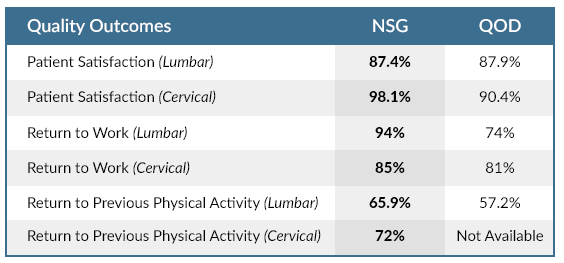
Ready to get started?
